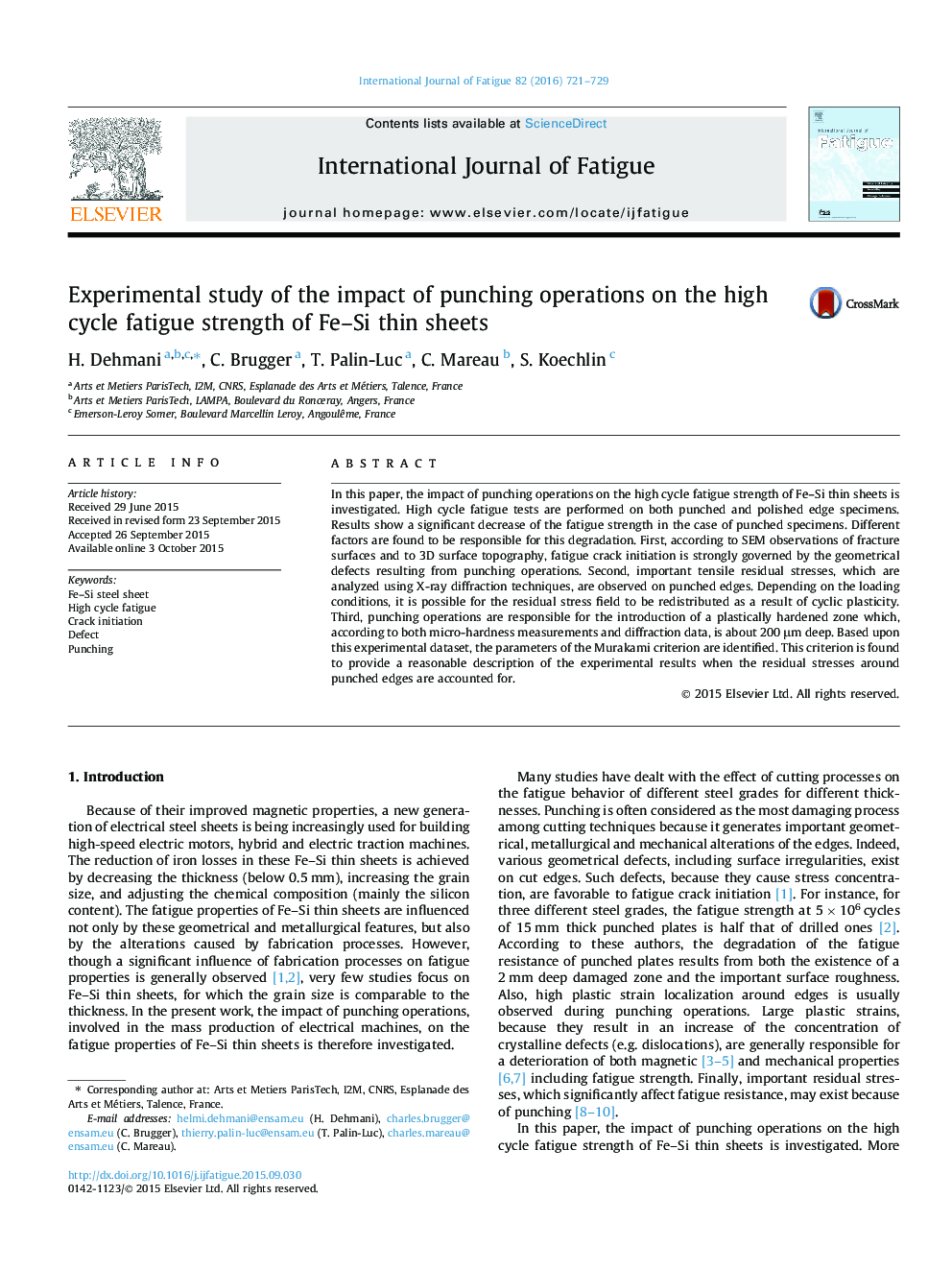| Article ID | Journal | Published Year | Pages | File Type |
|---|---|---|---|---|
| 7171919 | International Journal of Fatigue | 2016 | 9 Pages |
Abstract
In this paper, the impact of punching operations on the high cycle fatigue strength of Fe-Si thin sheets is investigated. High cycle fatigue tests are performed on both punched and polished edge specimens. Results show a significant decrease of the fatigue strength in the case of punched specimens. Different factors are found to be responsible for this degradation. First, according to SEM observations of fracture surfaces and to 3D surface topography, fatigue crack initiation is strongly governed by the geometrical defects resulting from punching operations. Second, important tensile residual stresses, which are analyzed using X-ray diffraction techniques, are observed on punched edges. Depending on the loading conditions, it is possible for the residual stress field to be redistributed as a result of cyclic plasticity. Third, punching operations are responsible for the introduction of a plastically hardened zone which, according to both micro-hardness measurements and diffraction data, is about 200 μm deep. Based upon this experimental dataset, the parameters of the Murakami criterion are identified. This criterion is found to provide a reasonable description of the experimental results when the residual stresses around punched edges are accounted for.
Related Topics
Physical Sciences and Engineering
Engineering
Mechanical Engineering
Authors
H. Dehmani, C. Brugger, T. Palin-Luc, C. Mareau, S. Koechlin,
